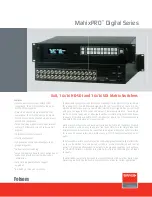
Low Voltage Switch Gear
Appendix
89
Emergency-stop switching device
Switching device within an emergency-stop circuit which is intended
to prevent danger to persons, damage to machinery or working
materials.
Opening delay
(IEV 441-17-36)
The interval of time between the specified instant of initiation of the
opening operation and the instant when the arcing contacts have
separated in all poles. The opening time is the sum of the tripping
time and the inherent delay of the contacts.
Closing delay
The interval of time between the instant of command and the first
make operation of the contacts of the first pole to close. The closing
delay is made up of the response delay and the closing time.
Shock resistance
The capacity of an equipment to withstand pulse-like motions without
changing its operating status or sustaining damage. No contact lifting
must take place on devices in the On position, the main contacts
must not knock against each other in the Off position. A safety switch
must not trip, and control circuit switches must not change their
switching status.
Safe isolation
(IEC 536, DIN VDE 0106 Part 101)
Isolation of circuits not carrying dangerous voltages (e.g. protective
extra-low voltage) from circuits in which dangerous voltages flow.
Such isolation is achieved by means of reinforced or double insula-
tion which reliably prevents voltage transfer from one circuit to
another. This might otherwise take place between main circuits and
control circuits in switching devices or between transformer primary
and secondary. ”Safe isolation” is a priority requirement for safety cir-
cuits and functional low-voltage circuits.
Isolating function
(IEC 947-1; 2.1.19)
Equipments are deemed to possess this isolating function provided
their switching contacts when in the open position, achieve the sepa-
ration distance prescribed for the isolation of electrical circuits, and
their creepage paths and clearance distances are of the required
size. The power supply to the entire installation or a section of the
installation can thus be cut off for safety reasons, e.g. during mainte-
nance.
Tamper proof
An emergency-stop switching device is regarded as tamper proof
provided it cannot be reset without tools or via a prescribed proce-
dure, after tripping has taken place. The device latches in the tripped
position. Accidental or deliberate manipulation (inching) is thus ruled
out.
Overvoltage category
(IEC 947-1; 2.5.60)
Conventional number for prospective overvoltages at the point of
installation, as might be caused for example by the effect of lightning
or switching processes. The overvoltage category applicable to
industrial switchgear is III. The applicability of switchgear according
to the overvoltage categories is defined as follows:
Overvoltage category IV:
Use allowed directly at the termination point of the installation
(directly affected by any lightning), e.g. at an overhead line connec-
tion point.
Overvoltage category III:
Operating media with special requirements as to the serviceability for
connection in fixed installations, which are protected by overvoltage
diversion measures, e.g. circuit-breakers in low-voltage distribution
systems or in control systems for industrial use.
Overvoltage category II:
Power consumers for connection to fixed installations, e. g. house-
hold appliances, electrical tools.
Overvoltage category I:
Operating media for connection to circuits containing overvoltage
protection schemes, e.g. electronic devices.
Ambient temperature, open
(IEV 441-11-13)
Room temperature for example of the workshop or switch room in
which the switching device is located.
Ambient temperature, enclosed
(IEV 441-11-13)
Temperature at which the switching device is capable of being oper-
ated within a closed housing. For this purpose, it must be taken into
account that the heat losses of the device will add to the internal tem-
perature rise within the enclosure.
Losses
(IEV 151-03-18)
The difference between the input power and the output power of a
device. The main type of loss in electrical power distribution switch-
gear and operating media is current heat loss.
Pollution degree
(IEC 947-1; 6./1.3.2)
Conventional number for the prospective quantities of conductive
dust and humidity which can lead to a reduction in the control circuit
reliability of a device. The pollution degree is described by the follow-
ing influencing factors:
Pollution degree 1:
No pollution or only dry, non-conductive pollution occurs. The pollu-
tion does not affect the control circuit reliability.
Pollution degree 2:
Usually, only non-conductive pollution. However, transient conductiv-
ity through condensation is to be expected.
Pollution degree 3:
(switchgear for industrial use)
Conductive pollution or dry, non-conductive pollution which is ren-
dered conductive through condensation.
Pollution degree 4:
The pollution leads to long-term conductivity, e.g. pollution by con-
ductive dust, rain or snow.








































